Resources
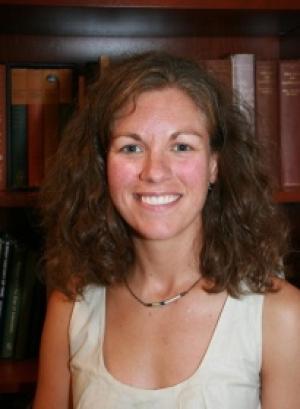
Molly Bassett Associate Professor of Religious Studies Georgia State University In my last post, I talked about the final class of my new course “Between Animals and Gods” and promised to say more about the informal student evaluations I give at the end of courses. Like students everywhere, mine take

Nancy Lynne Westfield Associate Professor of Religious Education Drew Theological School Sometimes learning is accompanied by tears, theirs and mine. The concept of mis-education is so disquieting to some students that tears are shed in the classroom. Never has there been bold sobs or muffled cries of languished sorrow

Theological school deans are not just theological leaders for their institution, they must be EDUCATIONAL leaders. That is, they must implement sound educational practices related to curriculum, instruction, supervision, assessment, and administration. While faculty members can focus on course-level and...
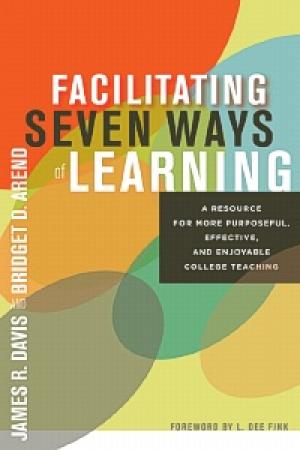
Two university educators who have led campus teaching and learning centers and worked as academic administrators have served us all well with their Facilitating Seven Ways of Learning. Davis and Arend seek explicitly to connect teaching practices to specific learning goals chosen for university classes. Not only do I recommend this book to you, but I will use it in my January PhD Teaching Seminar. At times the language of the book is a bit grand, talking about being “trapped” in a “lecture paradigm” with an “obsolete” view of learning (5, 8). They claim “confusion reigns as the paradigm crumbles (15).” I forgive them, for it does not continue too long. Perhaps the assumption was that a grand view was necessary to sell books to skeptical readers. Nevertheless, the book delivers what it promises: to help faculty, trained as scholars, researchers, and writers, to focus additionally on being effective teachers concerned about learning – for citizenship, personal development, and the ongoing generation of knowledge. Conversation about teaching is increasing in graduate schools, professional schools, and universities. At a recent consultation, I heard faculty members talk among themselves about how they trusted their colleagues, knew that individual classes were faithful and effective, and yet were concerned that their overall curricular goal for critical, integrative practical theological wisdom was not occurring. One mentioned that they all worked hard at fulfilling goals for individual classes, but had not attended to specific integrative commitments of their curriculum together. Facilitating Seven Ways of Learning is a way to begin addressing that concern. After assisting faculty to define course learning goals, the authors take seven explicit learning commitments and demonstrate effective pedagogical practices. The seven ways of learning are: building skills; acquiring knowledge; developing critical, creative, and dialogical thinking; cultivating problem-solving and decision-making abilities; exploring attitudes, feelings, and perspectives; practicing professional judgment; and reflecting on experience. One can see the influence of Bloom and Shulman here. The authors help faculty clarify how learning goals connect with these seven ways of learning and offer concrete strategies for teaching. To quibble: I am not certain that simply reflecting on experience is a goal. Is it not more a learning strategy for professional judgment, acquiring knowledge, or practicing decision-making skills? Regardless, this book will generate conversation among faculty members and will assist them to make the move from learning commitments to classroom strategies. As mentioned, I will use this book in my next PhD teaching seminar. Faculty are committed to assisting doctoral students to consider the vocation of teaching, connect academic study with teaching, and gain practical skill in course design and teaching practices. I have brought together bibliographies on theological education, course design, and learning strategies that I routinely share with graduate students. With Facilitating Seven Ways of Learning, students can practice naming commitments of their disciplines and their own scholarship, explore the learning goals they have for their students, dialogue with faculty mentors about the particular concerns of classes, and connect teaching practices to learning commitments. Clearly this book was written after years of experience in a college teaching center, empowering faculty colleagues. I recommend it.

Nancy Lynne Westfield Associate Professor of Religious Education Drew Theological School God is unknowable. So, the things of God cannot be learned – they must be revealed. What does it mean to teach our students to wait for the revelation, to be aware of the revelation, to find joy in
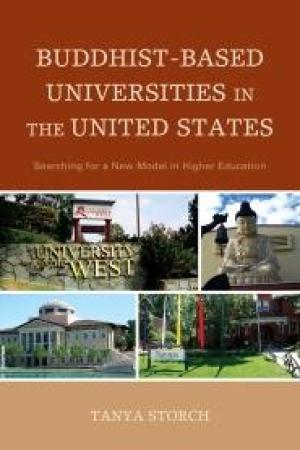
Expressing her concern about the current direction of higher education in the West, Dr. Storch argues that we can learn from the pedagogical principles of four “Buddhist-inspired” universities in the U.S. The first four chapters of this slim book each focus on one of these universities. Each is “a university that is state-accredited, which offers degrees in liberal arts and professional fields, and at the same time uses Buddhist pedagogical principles” (vii). Each chapter begins with a one to two page description of the school’s campus and the values its landscape and architecture embodies. This is followed by a brief biography of the male leader who founded the University or its parent Buddhist organization. These biographies, which occupy roughly a third of each chapter, are taken from official materials published by the organizations. The final two sections of each chapter review describe the historical founding of the school, its curriculum, and the impressions of its students. Data is drawn from websites and other promotional materials, and a few interviews. The last section of each chapter outlines the Buddhist pedagogical principles used at these universities, and the impact the author sees these having on students. The fifth and final chapter is the most engaging part of the book. Here the author discusses Buddhist pedagogical principles in three categories. (1) “Mindfulness”: Even though traditional meditation practice is not required, or even taught, at all of these schools, an atmosphere of mindful engagement is cultivated, and this is beneficial for students and faculty. (2) “Interconnectedness of all life”: These schools emphasize this principle inside and outside the classroom. Students are treated as real people, not as consumers; there is plenty of green space and fresh air in the classrooms; and values of environmental protection and vegetarianism are promoted. (3) “Right motivation for giving and receiving education”: These schools resist the pervasive contemporary tendency toward the commodification of all things, especially education. Students are taught values instead, and faculty and administrators treat students with compassion. This book concludes with a reflection on two of the pedagogical themes of the book: the teaching of meditation and ethical education (meaning an education that is both ethical toward students, and that teaches students to be ethical themselves). There are many places where the author could have deepened her inquiry. For example, how much do the educational models described here, which focus on educating the whole person and a commitment to values, represent a novel approach to education, and how much do they repeat already well-established models of liberal arts education? Also, although other Asian religions have not established comparable schools in the U.S., there is a long history of religiously-based liberal arts education, such as Jesuit Universities. How do these different approaches compare? Ultimately, this book is short in length and narrow in scope. The first four chapters range between thirteen and eighteen pages, without notes. The most substantial chapter is the fifth, and it could easily have stood alone as a journal article. This chapter raises a few important points about Buddhist pedagogical principles, but the book as a whole seems only half finished, and at this price it is difficult to recommend it to the readers of this site.
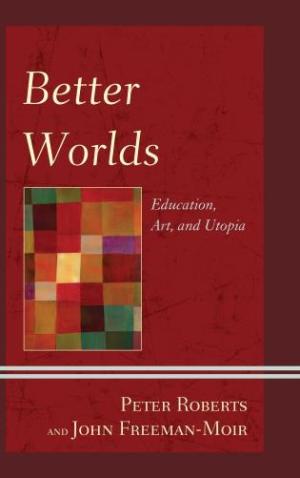
Better Worlds: Education, Art, and Utopia does not immediately relate to theological education. However, it does cover interesting and thought-provoking topics of potential use for those working in the theological school classroom. Yearnings for utopia express a desire akin to awaiting the Kingdom of God. Therefore, looking at ways the trope of utopia is formulated in the fields of education and the arts can provide interesting parallels for the theological school classroom. The core question is what would a better world look like? Roberts and Freeman-Moir take the reader through a sweeping survey of topics. In one section, John Dewey and William Morris’s utopian philosophies provide a backdrop for the discussion of utopias as places where each person can practice skilled craftsmanship, developing a craft to the point where it becomes artisanal. In chapter 2, visual art as a dystopian tool is regarded as something that can evoke true sympathy. The authors invite readers into various imaginative spaces to consider how imaginative sympathy can propel us into action, or at least into moral discomfort caused by the difference between the present world and imagined utopian dreams. Chapter 4 discusses the role of images, showing their power as pathways to action that open the imagination to craft a space of deciding and reflecting. This is similar to the praxis-theory-praxis loop championed by many theologians and seminary educators. For the theological educator, perhaps the most à propos chapters are those concerned with the liberation pedagogy of Paulo Freire and the literature of Fyodor Dostoevsky and Hermann Hesse. The chapter on Freire’s liberation framework provides a useful overview of his life and work with a focus on his utopian realism. The chapters on Dostoevsky and Hesse provide interesting analyses of their theologies and philosophies. I have two main critiques of this text. First, the authors spotlight too few female utopian visionaries. Chapter 3 focuses on writer and philosopher Iris Murdoch, but this is by far the weakest chapter in the book. The authors are clearly aware of feminist (or at least female scholars’) viewpoints in the various fields they describe. The book would have been stronger had they chosen at least one compelling female figure’s utopian or dystopian vision to unpack and describe. My second criticism is that the chapters are fairly disjointed, each chapter representing a different topic and field, and there is no final conclusion that draws all the themes together. The authors put forth education as “utopian curiosity” (107), where each opportunity for knowledge-building provides entry into a world larger, more spacious, and more creative than the one in which the student previously lived. Allowing these alternate worlds to wash over faculty imagination may provide ways to take critical looks at the contemporary roles of theological educators and to invite questions such as: What are the aims and purposes of theological education and how do they compare to utopian and dystopian visionary aims and purposes? What is the role of the theological educator in this process? What does pedagogy look like if faculty seek to go beyond simple information sharing to something more complex and critically reflective?
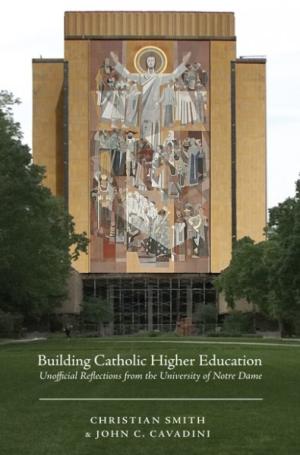
In this slim volume, Christian Smith, a sociologist of religion on the faculty of the University of Notre Dame, takes on a pivotal question for the future of Catholic higher education: faculty engagement with Catholic intellectual tradition. Exploring the convergence of Notre Dame’s three strategic goals – to provide an unparalleled undergraduate education, to gain recognition as a globally premier research university, and to remain thoroughly and distinctively Catholic – Smith brings into sharp focus two fundamental issues: (1) that any faith-grounded university’s capacity to fulfill its mission rises and falls on the knowledge, quality, and dispositions of its faculty; and, (2) that Catholic universities must wrestle with how their faculties engage Catholic intellectual tradition in their academic disciplines. His wrestling with these issues makes the book worth reading for anyone involved in faith-based higher education. In the first chapter Smith lays out the texts from which he will work: the University of Notre Dame’s mission statement, Fr. John Jenkins’ inaugural presidential address, excerpts from Jenkins’ annual addresses to faculty, and Provost Tom Burish’s letter announcing a committee to explore hiring outstanding Catholic faculty. In four subsequent chapters Smith details the assumptions behind these texts with their implications for faculty; elaborates a range of ways that faculty, whether Catholic or not, can support Notre Dame’s mission; proposes what the pursuit of social science disciplines might entail in a context where Catholicism matters; and, takes a hard look at whether it is possible for Notre Dame, or any other faith-grounded university, to pursue three goals simultaneously – unparalleled undergraduate education, premier research status, and robust engagement with the Catholic thought across all disciplines. (He doubts that it is.) A paper by John Cavadini on the role of theology in a Catholic college or university serves as the appendix. Smith’s dialectical approach emphasizes boundaries. He asserts that universities “cannot meaningfully call themselves ‘Catholic’” unless “Catholicism as a distinctive approach to life and the world” significantly influences intellectual inquiry, scholarship, and teaching; initiatives in valuing social justice or in spiritual formation will not suffice (65). His chapter detailing the “tensions, trade-offs, and dangers” involved in attempting to achieve excellence in undergraduate education and premier research status “in an institutional, cultural, and pedagogical context that is robustly Catholic” is refreshingly practical and pragmatic (78). Smith recognizes the challenge involved in an academic department attempting to maintain coherence with some faculty focused on teaching, others on research, and still others on Catholic dimensions of a discipline. At points Smith is nostalgic for an era when Catholic universities were Catholic by virtue of their enmeshment in the webs of a subculture. He is far more anxious about the prospects for maintaining the Catholic character of universities than is John Haughey, S.J., whose Where is Knowing Going? The Horizons of the Knowing Subject (Georgetown University Press, 2009) offers an alternative, analogical approach to the question. Still, Smith makes his case that Catholic universities cannot maintain a robust Catholic identity without a critical mass of faculty members who both understand and engage Catholic thought and life critically and faithfully. Read together, Smith and Haughey could animate a vital conversation in which Catholic college and university faculties need to participate.
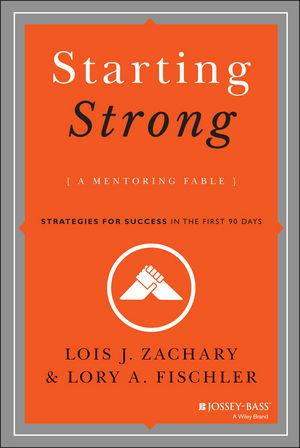
Lois J. Zachary and Lory A. Fischler’s Starting Strong is an accessible book that has varying use depending on one’s institution. The book is composed in two sections. The first is a fable situated within a large corporation that has multiple divisions and an official mentoring program. The main characters are Cynthia, a VP of Marketing and Communications, and Rafa, a newly hired financial analyst. The fable follows them through six mentoring conversations and maps their mutual development. The second section is a summary and strategy for having those same conversations in your own mentoring relationships. Zachary and Fischler’s writing is easily absorbed and their ideas about mentoring presented in the form of a dialogue allow readers to imagine themselves in similar conversations whether they are a mentor or mentee. Scholars who are in institutions with formalized mentorship programs may find this to be a helpful book because it can assist with structuring early mentorship meetings, setting boundaries and goals, and setting the stage for both mentors and mentees to benefit from a mentoring relationship from the beginning. Starting Strong’s weakness for those teaching and learning in Religious Studies and Theology is that the book’s corporate setting results in some mentoring relationships that are hard – if not impossible – to copy to the relationships in which most professional academics will engage. For example, Cynthia has no power over Rafa. She is only a mentor, there for his development. This model excludes the teacher-student relationship in which mentoring takes place -- where assessment is a significant obstacle to overcome toward building rapport with students. So long as teachers hold the power to evaluate students, then the mentorship relationship Zachary and Fischler imagine does not happen in academia. By the same token, unless your institution has a formalized mentorship program that explicitly takes people out of their colleges and departments and into relationships with people in other faculties, the risks to tenure and promotion from a mentor who works closely with one’s supervisors does not allow for the kinds of open exchanges and risks Cynthia and Rafa take in developing Rafa’s leadership skills. Zachary and Fischler did not write this book for academics, but if academics are going to think about mentorship and the development of students and faculty then the question of how that might be done within higher education’s hierarchies needs to be asked. It is worth the time to think about how to formalize mentorship programs into specific institutions – both for students and faculty – and this book can help once those programs are implemented. For those who are looking for a book that can help start the process of mentoring someone, including graduate students, then this is a useful book to mine for ideas, especially the second section in which the authors summarize the conversations one needs to have to achieve mentoring success in the first ninety days. I recommend Starting Strong as a resource for graduate student supervisors, but its assumptions do not translate as well into undergraduate mentorship.
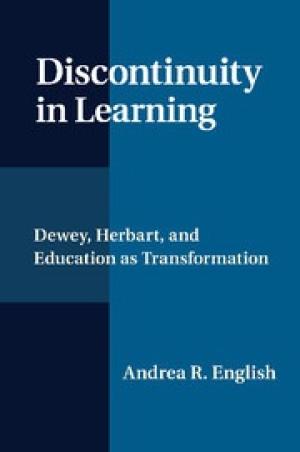
Andrea R. English’s Discontinuity in Learning re-links the work of Johann Friedrich Herbart with that of John Dewey. Dewey criticized Herbart’s work, causing, English argues, future critics to separate Dewey’s thought from its European predecessors (xx). English argues for continuity, that both thinkers want to identify and develop ways “for learners to recognize and respond to the other in judgments and actions” (104), through the experience of discontinuity. English’s excellent analysis of Herbart focuses on discontinuity, offering frameworks to analyze educational theories and practices that ignore discontinuity and reconnecting Anglo-American and Continental philosophies of education (xxiii-xxiv). I cannot do justice to this rich book here. I will focus on its main idea: education as discontinuity. English examines Herbart’s analysis of the educational possibilities in his contemporary’s (Kant’s) Categorical Imperative. To act so as not to treat others as things and as any other ethical person would act, one engages in moral choice. Herbart argues that educators can work with the experience of the discontinuous that emerges in encounter with the “other,” identifying where a learner already acts out of inner freedom (46) to move that learner to greater freedom, the capacity beyond “self-interested desires,” in recognition of and respect for the other (7). Discontinuity causes a pause (34) at the limits of one’s abilities and/or knowledge (xxii). This “in-between” (Dewey), “distance” (Herbart 16, 27), or “break” (English, 17) is a site of struggle (59) to transcend a limit. There, the learner can “identify and potentially change” her relation to the other (65). A teacher does not choose for the student, but designs an intellectual experience, to use Donald Finkel’s term, to scaffold the struggle (17), while, simultaneously, being open to improvisation on the design. Dewey agrees with Herbart: discontinuity is to “undergo or suffer the world” that upsets stable understandings (66), a starting-point for reflection (68). In learning, teacher and student struggle together in ongoing “critical self-relation.” For Dewey, the classroom is not just a site of moral struggle but of democratic action (89). Arriving at the social, as well as personal, “limits of thought and ability” (102), one learns, potentially, to choose for the good of all. Both the classroom and democratic society should support the deep learning that ensures freedom. For Dewey and Herbart, the goal of learning is right orientation to the other (105) through disorientation and reorientation, guided by the teacher who listens intently and generates dialogue, moving students to greater inner freedom and just action. The skilled teacher deploys “pedagogical tact” (50ff, 126ff.), discerning when to intervene in student learning and when to improvise (129) on the learning design. Neither teaching nor learning, therefore, can be determined as complete in outcomes and measured fully by evaluations. Nowadays we experience such “urgency” (55) about measures that we want to “predetermine” and “guarantee” learning (156). English argues, instead, for cherishing the discontinuous and valuing the improvisational space of the classroom in which teachers “acquaint the next generation” with their present world and prepare them for a “future yet to be discovered” (160).